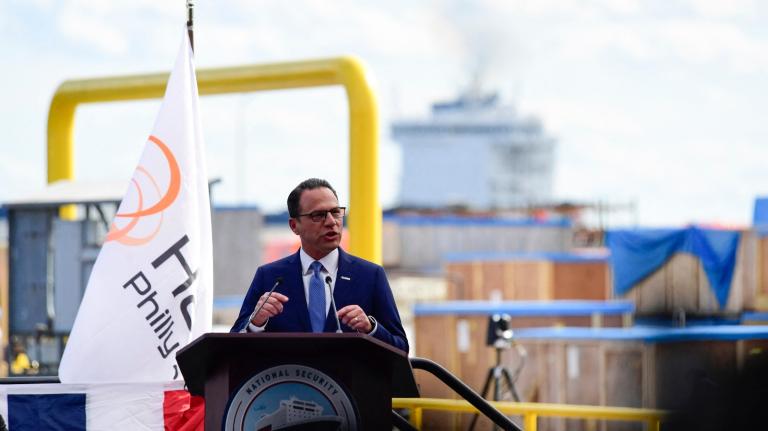The Chart of the Month comes from the Wall Street Journal (at right).
“The figure reflects a huge surge in U.S. oil drilling, up nearly 60 percent in the past year and the highest total since at least 1987, when oil services company Baker Hughes Inc. began keeping track,” notes the WSJ.
Poor Barack Obama. He opens up the country to a drilling spree — and naturally progressives are pissed because, well, we care about things like clean air, clean water, and a livable climate.
But conservatives are strangely ungrateful, too! They blame Obama’s supposed anti-drilling policies. So Mitt Romney said earlier this year, “People are hurting, gasoline’s expensive, and the policies of this administration that have focused solely on green technologies are not keeping the cost of gasoline down.”
Darn you, Barack Obama, for only quadrupling the number of oil drilling rigs in the U.S.!
The fact is, oil prices soared despite both record drilling and the highest domestic oil production levels in almost a decade. It should be obvious that yet more drilling can’t have any significant impact on oil prices — particularly since the U.S. Energy Information Administration (EIA) has been making that precise point for years now.
Here is an update from a chart we did earlier this year of U.S. oil production using EIA data, including the first six months of this year:
The only thing that can protect Americans from the inevitably increasing oil shocks of peak oil is an aggressive strategy to reduce the country’s oil consumption and intensity (oil/GDP), including a steady increase in the fuel efficiency of our vehicles — policies that conservatives have fought for decades, but that Obama has made a reality.
Where is the drilling? The WSJ reports:
The drilling boom is being driven by a variety of factors. New technologies have allowed companies to tap vast new oil reserves in places like North Dakota, Texas and, most recently, Ohio. High oil prices are making once-unprofitable fields more tempting …
All that drilling is helping to boost U.S. oil production. The U.S. pumped 3.9 million barrels a day from onshore fields in March, up 5.9 percent from a year earlier, and the most in nearly a decade.
And yet gasoline prices remains stuck at much higher levels than a year ago. Where is the love from the oil companies?
The EIA’s 2009 report analyzed the difference between full offshore drilling (“Reference Case”) and restriction to offshore drilling (“OCS limited case”). In 2020, there is no impact on gasoline prices. In 2030, U.S. gasoline prices would be three cents a gallon lower. Woohoo!
I have previously written about the trivial impact of opening the outer continental shelf further to drilling. The oil companies already have access to some 30 billion barrels of offshore oil they have only begun to develop.
If you are concerned about the impact of high oil prices from Middle East instability, the only viable long-term strategy is one aimed at ending our addiction to this climate-destroying fossil fuel. Even the once staid and conservative International Energy Agency understands that. Obama has, thankfully, started to take aggressive action in this area, raising new car fuel efficiency standards to 35.5 mpg by 2016 — and then 54.5 mpg by 2025 — the biggest steps the U.S. government has ever proposed to cut oil use.




